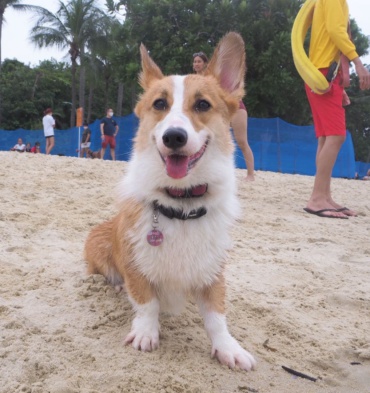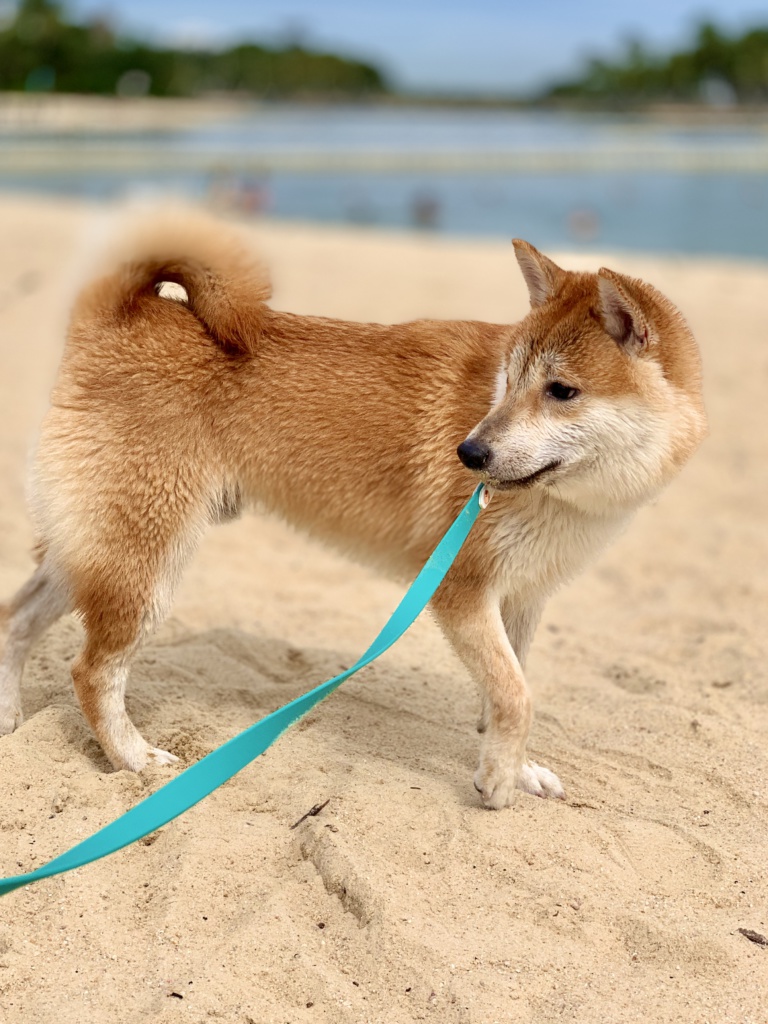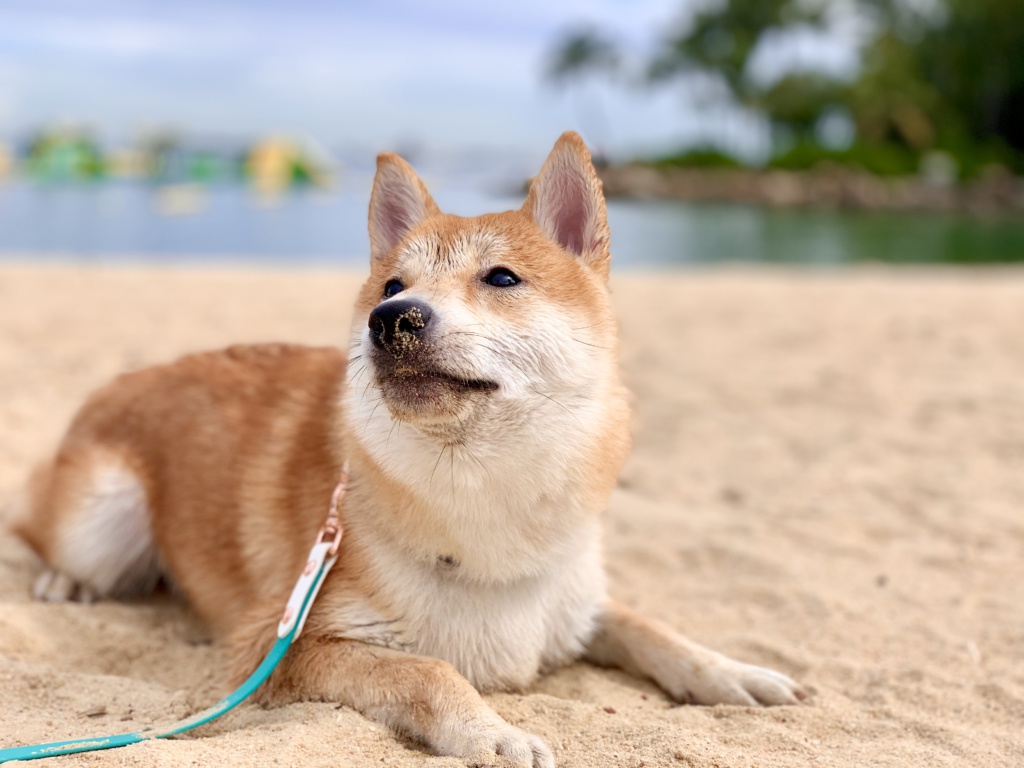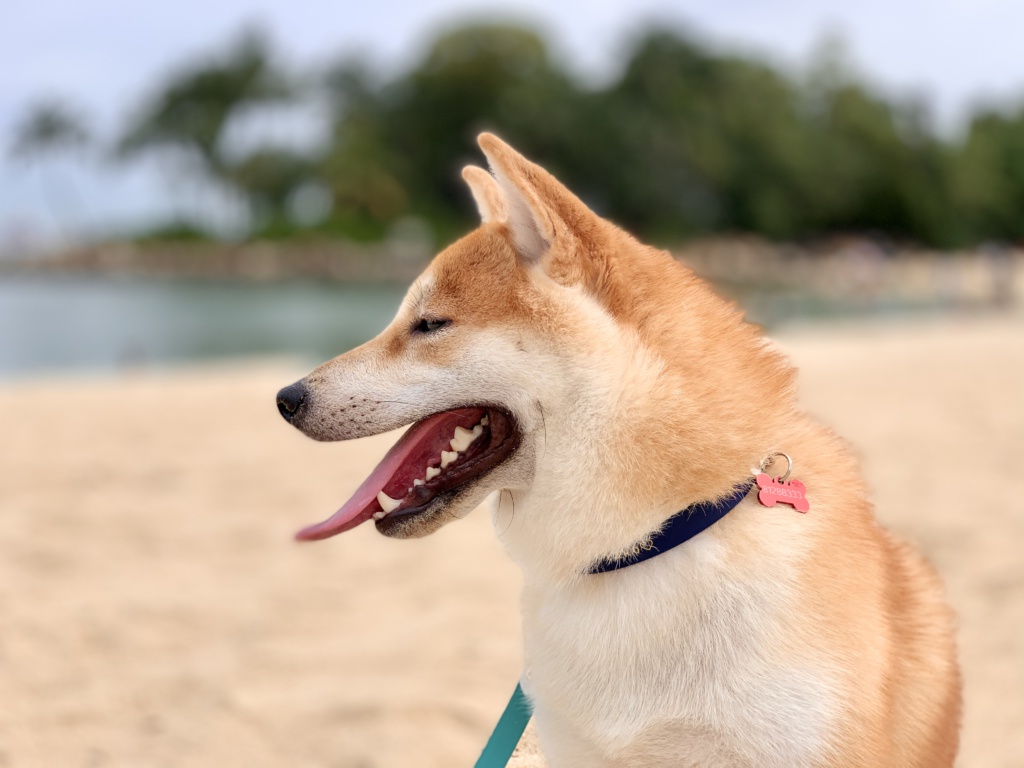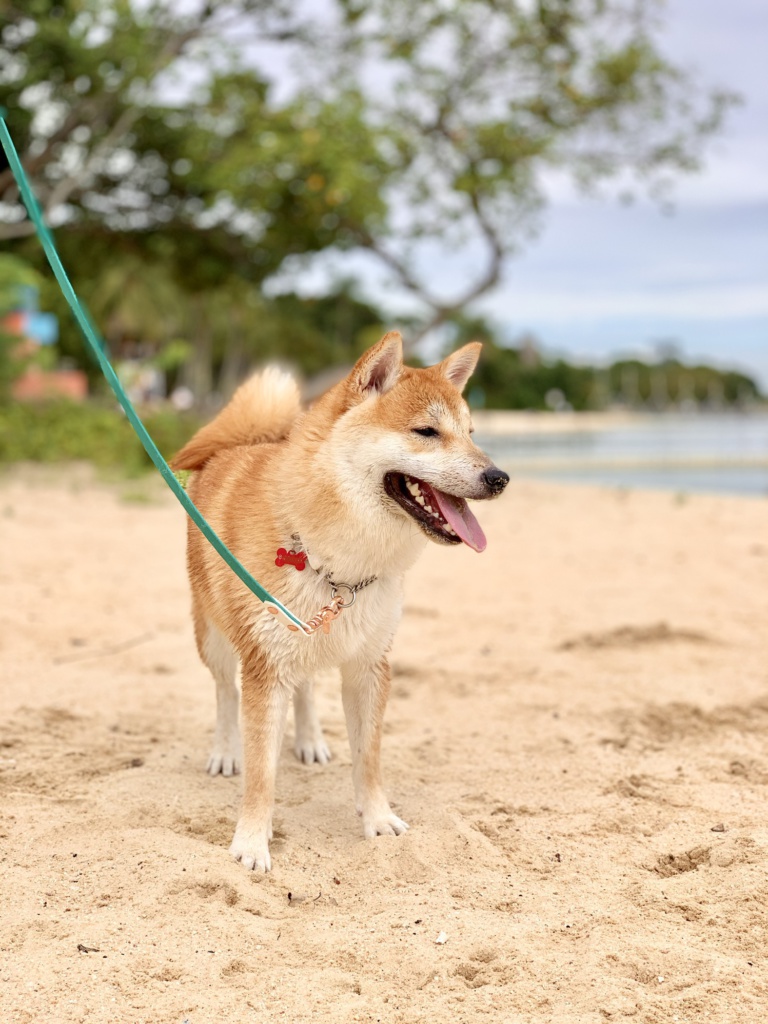As boring as Singapore may be, we are lucky to be able to enjoy free access to Sentosa beaches till the end of the year!
1. Booking a slot & getting there
If you’re bringing your dog along, you can book a slot at Tanjong Beach and choose either Zone 1 or Zone 2. For us, we prefer the Zone 1 area as there is more space for off-leash zoomies! You will have to choose between an AM or PM slot as well.
Things to bring:
- Bathing supplies for your doggo (shampoo, towel, SPARE TOWEL)
- A ground mat plus enough items to weigh down the sides
- Extra disposable sheet for your doggo to rest on, because they can get very dirty (optional)
- Water and treats
- Extra hooman to carry all the belongings while you handle your dog ?

Park right outside Tanjong Beach Club and you can easily walk to Tanjong Beach in just a few minutes. Don’t forget to watch out for oncoming bikes while bringing your dog to the beach area!
If you did not book a slot, you may not be able to access the beach if they are filled! You can always try your luck at the counter outside the beach but that’s subjected to availability on the day itself. I suggest booking at least 3 days in advance to secure a time slot.
2. Unleash the zoomies!
Only unleash your dogs if you are confident of their outdoor recall with distractions. There have been cases of dogs going missing at Sentosa without a leash. Don’t forget to put on your dog’s ID tag as well!

Things to note:
- Not all dogs you meet at the beach is friendly, always be ready to mediate a fight
- There will be many children at the beach, if your dog is not 100% friendly with kids, keep a safe distance and politely tell them to give your dog some space if they intend to approach, you do not want to risk anything
- Do not let your dog eat sand! Check out the article written by Taro
- There may be some trash lying around the shore, make sure that your dog does not ingest them
- Don’t forget to drink up
- If your dog is extremely food-motivated, ensure that they do not snoop around other beach go-ers bags! (#guilty)
It is crucial to keep a safe distance from other beach go-ers. There are designated spots for different groups of beach goe-ers to lay their mats. You will be asked to leave the beach if you do not comply. Keep your masks on at all times unless you are heading for a swim as well.

Once your dog gets wet, you can only expect him to get even dirtier with all the sand and dirt getting trapped on his fur, especially for thick-coated dogs. If you leave your pet’s harness or collar on while they are swimming, you may possibly expect them to get some abrasion a few hours later.

Meet your trusted furriend which your pet can get along with and have crazy zoomies together!
3. Time to clean up
There is an outdoor bathing point outside the beach, next to the public toilet at the carpark. It has been implied as a washing point for dogs already. You will be required to exit the beach area and remove your tag after leaving the beach.
Here’s where your bathing supplies and extra hooman will come to use. The wash point is pretty small and there are two working water taps. Get your extra hooman to help push the tap while the main handler shampoo the dog. Definitely not easy, but it could at least get rid of most of the sand trapped in your dog’s fur. I would recommend having a proper bath once you reach home.
Thick-coated dogs may not dry in time before heading back home and that’s where your extra towel comes to use. Lay it out in your car and let your doggo have a good sleep while you are all sweaty and dirty, chauffeuring your little king home.
